In the rapidly evolving landscape of modern business, the integration of artificial intelligence (AI) with digital strategies has become increasingly crucial. Companies are exploring innovative solutions to streamline operations, enhance communication, and leverage data-driven insights. One notable trend emerging from this synergy is the concept of agentic workflows, which empower users and organizations to make intelligent decisions and automate tasks effectively. This article delves into the recent developments surrounding agentic workflows, AI’s role in digital strategy, and how tools like Grammarly AI are shaping the future of workplace efficiency.
.
## Understanding Agentic Workflows
Agentic workflows refer to processes that enable individuals and teams to take ownership of their tasks and decisions with the support of intelligent systems. These workflows are characterized by their adaptability, encouraging teams to integrate AI and automation into their existing processes seamlessly. By prioritizing user agency, businesses can foster an environment that promotes creativity, innovation, and efficiency.
.
### The Rise of Agentic Workflows
Over the last few years, organizations have recognized the limitations of rigid and hierarchical workflows. The demand for flexibility in operations and decision-making has led to the emergence of agentic workflows. These workflows allow employees to contribute effectively to projects, tailoring their approaches based on real-time data and insights provided by AI systems.
According to a report from Grand View Research, the global AI in business market is expected to grow significantly, with agentic workflows playing a vital role in this transformation. Companies that implement agentic workflows can expect improved productivity and a more engaged workforce.
.
### Benefits of Agentic Workflows
1. **Enhanced Collaboration:** Agentic workflows promote open communication among team members, encouraging collaboration and shared responsibility for project outcomes. This environment fosters trust and strengthens relationships within teams.
2. **Increased Adaptability:** As market conditions fluctuate, businesses need to respond quickly to changes. Agentic workflows allow organizations to adjust their strategies, reallocating resources based on the most pertinent data available.
3. **Empowerment of Employees:** By fostering a sense of ownership, agentic workflows empower employees to take the initiative, leading to increased motivation and job satisfaction. This empowerment translates into improved performance across all levels of the organization.
4. **Intelligent Automation:** By integrating AI with agentic workflows, teams can automate repetitive tasks, freeing them to focus on more strategic initiatives. This capability enhances efficiency and reduces the burden on employees.
.
## The Integration of AI in Digital Strategy
As businesses recognize the strategic advantages of AI, incorporating it into their digital strategies has become essential. The following areas highlight how AI informs digital strategy, particularly when paired with agentic workflows.
.
### Data-Driven Decision Making
AI technologies can analyze vast amounts of data, uncovering insights that can guide strategic decisions. For example, predictive analytics powered by AI can forecast market trends, allowing businesses to adapt their strategies proactively. By harnessing these insights, companies can inform their agentic workflows, facilitating a culture of data-driven decision-making.
### Personalization and Customer Engagement
Personalization is an essential aspect of modern digital strategies. AI can analyze user behaviors and preferences to deliver tailored content and services. By creating personalized experiences, organizations can improve customer engagement and loyalty, resulting in a competitive edge.
Companies leveraging AI for personalization can also optimize their agentic workflows. By continuously monitoring customer interactions, AI facilitates real-time adjustments to workflows, ensuring that employees engage effectively with customers and meet their needs.
### Streamlining Operations
AI can identify inefficiencies and bottlenecks within business processes, suggesting improvements for workflows. By streamlining operations, organizations can reduce costs, enhance productivity, and maintain a competitive advantage through agentic workflows. This integration fosters an environment where employees are empowered to make informed decisions based on AI insights.
.
## Industry Applications of AI and Agentic Workflows
The application of agentic workflows and AI can be observed across various industries, transforming operations and enhancing outcomes.
### Financial Services
In financial services, AI-driven algorithms analyze market trends and customer behavior to inform investment strategies. With agentic workflows, financial analysts can leverage these insights to make data-driven investment decisions, increasing profitability and reducing risk.
A study by McKinsey & Company found that organizations in this sector that implemented AI reported at least a 30% increase in efficiency. As data continues to accumulate, the ability to make informed decisions will further amplify the value of agentic workflows in financial services.
### Healthcare
The healthcare industry has also embraced the potential of AI. From diagnostics to patient management, AI provides valuable insights that can enhance decision-making. With the integration of agentic workflows, healthcare professionals can collaborate more effectively, utilizing real-time data to improve patient care and operational efficiency.
A prominent application can be seen in telemedicine platforms that leverage AI for scheduling, diagnostics, and patient tracking. By joining AI with agentic workflows, healthcare providers can enhance patient outcomes, streamline communication, and manage resources more efficiently.
### Education
AI is revolutionizing education with the introduction of personalized learning experiences. Leveraging AI to analyze students’ learning patterns and progress, educators can tailor curricula to meet individual needs. Agentic workflows facilitate collaboration among educators, enabling them to adapt their teaching strategies based on real-time insights.
Recent studies have shown that students in personalized learning environments exhibit increased engagement and improved performance. By prioritizing agentic workflows in education, institutions can create more dynamic learning environments.
.
## Technical Insights: Grammarly AI
One of the standout examples of AI’s integration into digital strategy is Grammarly, an AI-powered writing assistant that provides real-time suggestions to enhance writing quality. While Grammarly is commonly associated with improving grammar and style, its broader implications in agentic workflows cannot be overlooked.
.
### Enhancing Workplace Communication
In a world where effective communication is paramount, Grammarly AI helps professionals refine their writing skills, ensuring clarity and precision. By integrating Grammarly into their workflows, companies cultivate a culture of effective communication, empowering employees to express their ideas confidently.
Employees benefit from instant feedback, allowing them to take ownership of their writing and develop their skills over time. This empowerment contributes to agentic workflows, where individuals are equipped to make informed decisions and present their ideas compellingly.
### Continuous Learning and Development
Grammarly AI fosters a mindset of continuous learning in the workplace. By providing personalized feedback, employees can identify areas for improvement and enhance their communication skills. This collaborative approach nurtures employee growth, further embedding agentic workflows within organizational culture.
According to Grammarly’s internal studies, companies using the platform have reported higher employee engagement and improved writing effectiveness. As organizations increasingly acknowledge the importance of effective communication, adopting tools like Grammarly AI becomes a strategic necessity.
.
## Conclusion
As businesses navigate the complexities of the digital age, the integration of agentic workflows and AI into organizational strategies will be pivotal. By empowering employees, fostering collaboration, and promoting data-driven decision-making, organizations can harness the full potential of their workforce.
The successful application of these principles across industries—be it in finance, healthcare, education, or professional communication—demonstrates the transformative power of combining agentic workflows with AI capabilities. Embracing this synergy will not only enhance productivity and innovation but also solidify the foundation for sustainable growth in an increasingly competitive landscape.
.
**Sources:**
– Grand View Research. (2023). “AI in Business Market Analysis.”
– McKinsey & Company. (2023). “The AI-Driven Future of Finance.”
– Grammarly. (2023). “Elevating Workplace Communication with AI Insights.”































